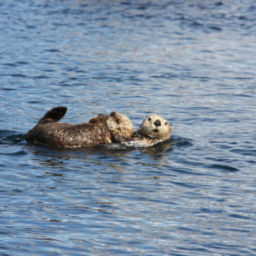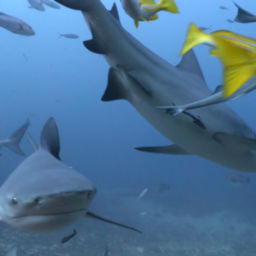Frigid, emerald waters are the quintessence of Pacific Northwest diving. But if you have the correct equipment, particularly a drysuit, Washington State offers many jewels of cold-water diving. Many dive shops now offer unique boat and shore dives throughout the year where encounters with even more eclectic creatures are possible. Deep drop-offs in the Puget Sound and wild drift dives throughout the many islands of the Strait of Juan de Fuca will enthrall both beginner and advanced divers with sightings of giant octopus, wolf eels, Steller sea lions and for a lucky few, orcas. Here are out picks for the top sites in Washington State.
San Juan Islands
What makes them special
Situated on the northern border of Western Washington between Vancouver, Canada and Seattle, this archipelago features over 400 islands. Stunningly beautiful, the islands are a popular outdoor recreation spot for kayaking with orcas. The rocky coastline features luscious green hills where farms produce cheese and wine.
Details
Underwater, the dramatic, rocky walls and reefs hold the islands’ greatest treasures — their marine life. Orcas, San Juan, Lopez and Shaw Islands are accessible by car and therefore the easiest to dive from, however, a plethora of other islands are easily accessible by boat. Under the Deception Pass Bridge, steep walls are laden with giant plumose and other colorful anemones. You’ll likely see invertebrates including king and Dungeness crab and, most impressively, lingcod. Divers sometimes spot larger species, including sea lions and orcas when they near shallower landmasses to feed on prey that hides in the kelp. Be warned that strong tides and rip currents can create potentially dangerous conditions.
When to go
The dive season is best between late spring and early fall when the water is warmer, and lucky divers may experience visibility up to 100 feet (28 m). Water temperatures fluctuate during the year but average from 45 to 55 F (7 to 12 C).
Hood Canal
What makes it special
An ancient fjord and part of the Salish Sea, Hood Canal skirts the edge of famed Olympic National Park, an ideal spot for a hike through lush forests and over burbling streams. Visitors flock to this natural waterway every year to collect oysters and crabs, but other creatures, such as Giant Pacific octopus, wolf eels and anemones, are common as well.
Details
Thanks to the canal’s low levels of oxygen, marine biologists have declared much of the underwater environment protected for study. Shore dives are popular at Hood Canal and many dive schools will be happy to guide divers to the best sites in the area. Sund Rock is an easy shore dive where an old fishing wreck and deep walls are good spots to search for the unique wolf eel.
Alki Beach
What makes it special
A stone’s throw from one of Seattle’s most famous beaches, Alki Beach Park is a fantastic shore dive for both beginners and experienced divers. While there can be strong winds in Puget Sound, creating waves and chop, a myriad of cold-water species that dwell in the shallow waters close to the beach make diving here a worthy experience.
Details
With depths of up to 60 feet (18 m), Alki Beach Park has plenty of man-made reef structures embedded in the mud beds. Gray whales graze here in the spring and throughout the year divers can see plumose anemone, northern kelp crab and rockfish. Harbor seals and orcas stray close to the beach during the summer, so keep an eye on the stretch of water between Elliot Bay and Puget Sound.
When to go
During winter the visibility can reach up to 100 feet (30 m), but during the summer months 10 to 50 feet (3 to 15 m) is more realistic. With average year-round temperatures of 45 F (7 C), drysuits are a must. Divers who visit during the winter may encounter squid congregating in the thousands to spawn. When the salmon run in local rivers, migrating Steller sea lions may also visit divers in the shallows.
Strait of Juan de Fuca
What makes it special
Running between the international boundary of Canada and the United States, the Strait of Juan de Fuca is notorious for orca sightings and a plethora of the most-unique marine species that inhabit the Pacific Northwest. This is where divers have the best chance of encountering wolf eels and giant Pacific octopus.
Details
Novices can easily attempt a dive at Sekiu Jetty. Silverspotted sculpins and red-eye jellyfish are some of the more unique species that live in the expansive eelgrass beds, gargantuan rock formations and thick kelp forests. Both by boat and by shore, Sekiu Jetty is easy to access. Orange-spotted nudibranchs and white-spotted rose anemones are all common residents of the area.
When to go
With visibility ranging from 30 to 75 feet (10 to 23 m), the best time to dive in the strait is between winter and early spring when the visibility is best.
Lake Crescent
What makes it special
The only inland site on this list, Lake Crescent is a pristine body of water famed for its lack of nitrogen, which inhibits the growth of algae and, in turn, creates the clarity of the lake. Located on the Olympic Peninsula, Lake Crescent has a maximum depth of 624 feet (190 m), making it one of the deepest lakes in Washington State.
Details
Giant, sunken trees that reach up 60 feet (18 m) from the bed of the lake and a crashed car from the turn of the 20th century are some of the highlights of Lake Crescent. A busy lake in the summer, many divers choose to visit in spring when the surface temperature can be as mild as 70 F (21 C) and visibility can exceed 60 feet (18 m). There is an old wooden barge as well as deep drop-offs, which make it a perfect location for training. Be careful, however, as the fantastic visibility can often lead divers into straying far deeper than they planned. Always check your gauges.
When to go
Spring and summer are ideal times to visit, when the water is warmest and the air outside is warm enough to be comfortable when you exit. This is a perfect dive to complement a trip around Olympic National Park.








